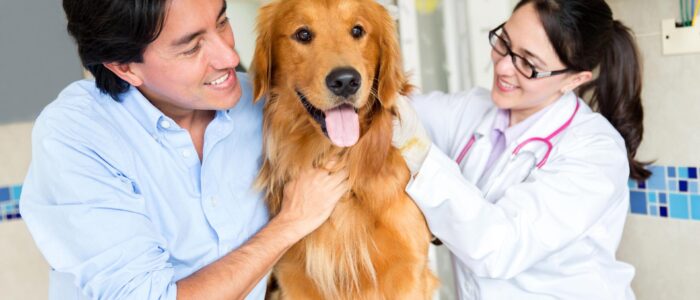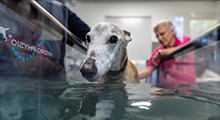What to Expect at a Dog Rehabilitation Centre

12 September 2024
Taking your dog to a rehabilitation treatment centre can be a daunting experience, yet it offers an invaluable opportunity for healing and recovery. Understanding what to expect during this process can significantly alleviate anxiety for both you and your canine companion. This blog aims to guide dog owners through the key aspects of rehabilitation treatment, ensuring a more seamless experience at a dog rehabilitation centre.
Understanding Dog Rehabilitation
Dog rehabilitation is an emerging field dedicated to helping pets recover from physical ailments and injuries. Much like human physiotherapy, these programmes focus on improving mobility, strength and overall well-being. Whether your dog has undergone surgery, suffered an injury or is dealing with chronic pain, a rehabilitation centre will provide specialised care tailored to your dog’s specific needs.
The first step typically involves an initial assessment. A qualified veterinarian or rehabilitation therapist will conduct a thorough examination to evaluate your dog’s history, physical condition and capabilities. They may assess your dog’s range of motion, strength and pain levels, gathering the necessary information to create an individualised treatment plan. This comprehensive approach ensures that each therapeutic method employed is appropriate for your dog’s unique circumstances.
The Treatment Process
Once assessments are completed, your dog will begin their rehabilitation programme. Treatment plans often include various techniques designed to promote healing. Physical therapy modalities such as manual therapy, hydrotherapy and exercise regimens may be integrated into the programme to enhance recovery. The emphasis here is on healing and on educating dog owners about how to continue their dog’s rehabilitation at home.
Hydrotherapy, for instance, is an effective approach for many dogs, allowing them to exercise without putting undue stress on their joints. This treatment can significantly improve muscle strength and range of motion, proving especially beneficial for overweight dogs or those suffering from arthritis. The gentle resistance of water enables dogs to build stamina while reducing the risk of further injury. Additionally, you can expect therapeutic exercises tailored to your dog’s capabilities, which may be adjusted regularly to suit their progress.
Emotional Considerations
It is essential to acknowledge that rehabilitation can be as emotionally taxing for dogs as it is physically challenging. Dogs may exhibit signs of anxiety or stress during their visits to the rehabilitation centre. It is crucial to remain calm and supportive during this process; your reaction will significantly influence your dog’s experience. The professionals at the centre are trained to handle these situations sensitively, ensuring your dog feels safe and secure.
Throughout the rehabilitation process, regular check-ins with the veterinary staff will provide insights into your dog’s status and progress. This ongoing communication nurtures trust and reassures you that your dog is receiving the best care. The staff will be keen to answer any questions and provide advice on how to manage your dog’s rehabilitation at home, including suggested exercises to promote further healing.
The Home Environment
In addition to the treatments at the rehabilitation centre, the home environment plays a pivotal role in your dog’s recovery. Adapting your living space to facilitate ease of movement can greatly assist in the rehabilitation process. It may be necessary to limit stairs and create comfortable resting places for your dog. The recovery phase also calls for consistent monitoring of your dog’s progress. Maintaining a log of their activities, behaviours and any noticeable changes will greatly assist your rehabilitation team in assessing their improvement and adjusting treatment plans if necessary.
The emotional bond between you and your dog is crucial during this time. Engaging in gentle play or quiet companionship can provide comfort and support. Your presence acts as a soothing balm, promoting a sense of security in your dog as they navigate their rehabilitation journey.
Participating in a rehabilitation programme at a dog rehabilitation centre is a proactive step toward ensuring the long-term health and well-being of your canine companion. While the process may feel overwhelming at times, knowledge and preparation can help alleviate uncertainty. Remember, the rehabilitation journey is not just about treatment; it is about nurturing hope and healing for your beloved pet.
Contact us at Pet Universe Veterinary Centre to learn more about rehabilitation treatments for your dog.


